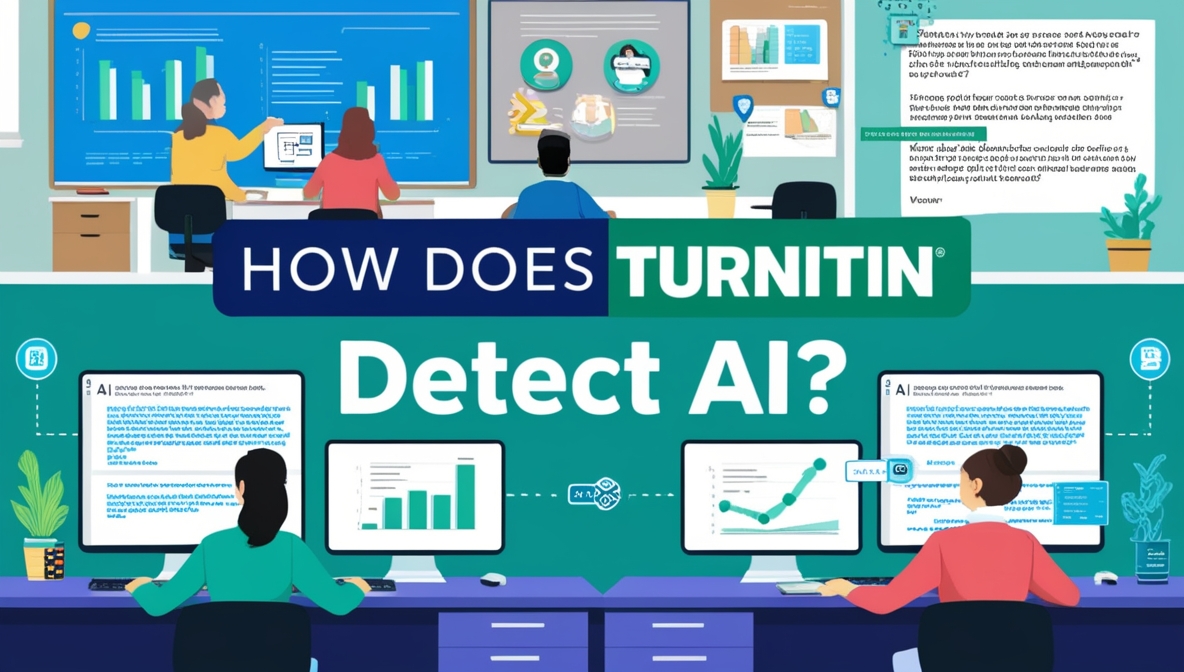Turnitin is a tool used by schools and universities to check if students’ work is original. As more students use AI to help with writing, Turnitin has added ways to detect if an AI wrote the text.
By analyzing patterns and unique features in AI-generated content, Turnitin can identify if a student has used AI tools in their writing.
In this article, we will discuss how Turnitin detects AI-written content, the techniques it uses, and what makes AI-generated text different from human writing. Understanding this process can help students learn more about academic honesty and responsible use of technology.
How Does It Work?
- Purpose of Turnitin
- Goal: Ensure originality in student submissions by checking against a vast database of sources.
- Analyzing Writing Patterns
- Language Patterns: Uses algorithms to detect repetitive phrases and unnatural language typical of AI writing.
- Consistency: Identifies uniform style in AI text compared to the inconsistencies in human writing.
- Comparative Analysis
- Database Comparison: Matches submitted text against existing sources to find similarities.
- Plagiarism Detection: Flags content resembling known texts or previously submitted AI-generated work.
- Machine Learning for AI Detection
- Adaptation: Continuously updates algorithms to recognize evolving characteristics of AI writing.
- Database Updates: Incorporates examples of AI-generated text to refine detection methods.
- User Feedback and Reporting
- Educator Reports: Allows teachers to report suspected AI content to enhance detection methods.
- Feedback Loop: Improves algorithms based on user input to keep pace with AI advancements.
Additional Tips for Educators
- Encourage students to develop their unique writing styles and critical thinking skills.
- Provide guidance on proper research and citation practices to avoid unintentional plagiarism.
- Discuss the ethical implications of using AI tools for academic work.
Why Understanding How Turnitin Detects AI is Important
- Maintaining Academic Integrity: It helps uphold honesty and accountability in academic work, ensuring students submit original content.
- Encouraging Authentic Learning: Awareness promotes genuine skill development, encouraging critical thinking and creativity instead of relying on AI.
- Navigating AI Tools Responsibly: Understanding detection methods guides ethical use of AI, promoting it as an aid rather than a shortcut.
- Fostering Awareness of Plagiarism: Knowledge of detection helps students recognize and avoid plagiarism, leading to more thoughtful work.
- Preparing for Future Challenges: Awareness equips students and educators to adapt to evolving AI technologies and their implications in education.
FAQs
Can Turnitin detect AI-written content accurately?
Yes, Turnitin uses advanced algorithms to flag AI-generated content by analyzing linguistic patterns.
Does Turnitin compare AI content to its database?
No, it doesn’t directly compare but detects AI through pattern analysis rather than traditional plagiarism matching.
How does Turnitin handle AI-detected results?
It generates a report highlighting potential AI influence for further review by educators.

Is Turnitin’s AI detection foolproof?
Not entirely; it’s continuously evolving to improve accuracy as AI writing technology advances.
Conclusion
Understanding how Turnitin detects AI-generated content is vital for maintaining academic integrity. By identifying patterns in writing and using advanced algorithms, Turnitin helps ensure that students submit original work. This promotes a culture of honesty and accountability in education.
Students should recognize the importance of developing their unique writing skills and using technology responsibly. By being aware of how AI detection works, they can engage with AI tools ethically, enhancing their learning experience without compromising their integrity.
P.S.: If you’re interested, get the best quality enlarged pictures in just a few clicks with our Image Enlarger Tool!